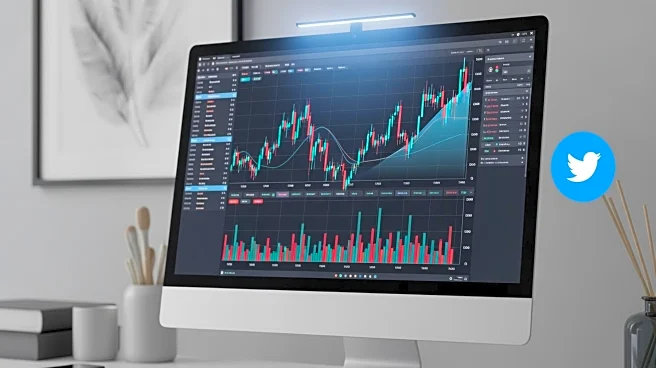What's Happening?
A market analyst has been leveraging Twitter, along with other platforms like YouTube and Telegram, to provide real-time trading insights and analytics. The analyst emphasizes the importance of staying
connected through these channels to receive timely updates and notifications about market movements, particularly in indices, stocks, gold, and oil. The strategy includes using Twitter for instant communication and Telegram for detailed trade calls, aiming to keep followers informed and ready to capitalize on intraday opportunities. The analyst also offers premium services for more personalized trading support.
Why It's Important?
The use of social media platforms like Twitter for financial market analysis highlights a shift in how traders and analysts communicate and share information. This approach allows for rapid dissemination of market insights, which can be crucial for traders looking to make quick decisions. By utilizing these platforms, the analyst can reach a broader audience, providing them with tools and information to potentially enhance their trading strategies. This trend reflects a broader movement towards digital and real-time communication in the financial industry, which can democratize access to market insights and empower individual traders.
What's Next?
As the reliance on social media for market analysis grows, it is likely that more analysts and traders will adopt similar strategies to engage with their audiences. This could lead to increased competition among analysts to provide the most timely and accurate information. Additionally, platforms like Twitter may continue to evolve their features to better support financial content creators, potentially integrating more tools for real-time data sharing and analysis. Followers of such analysts may need to stay vigilant and discerning about the quality and reliability of the information they receive.
Beyond the Headlines
The integration of social media into financial analysis raises questions about the accuracy and reliability of information shared on these platforms. While they offer speed and accessibility, there is a risk of misinformation or over-reliance on unverified sources. This development also highlights the importance of digital literacy among traders and investors, who must navigate these platforms effectively to distinguish between credible insights and noise. Furthermore, the trend underscores the growing influence of social media on financial markets, which can lead to increased volatility as information spreads rapidly.














